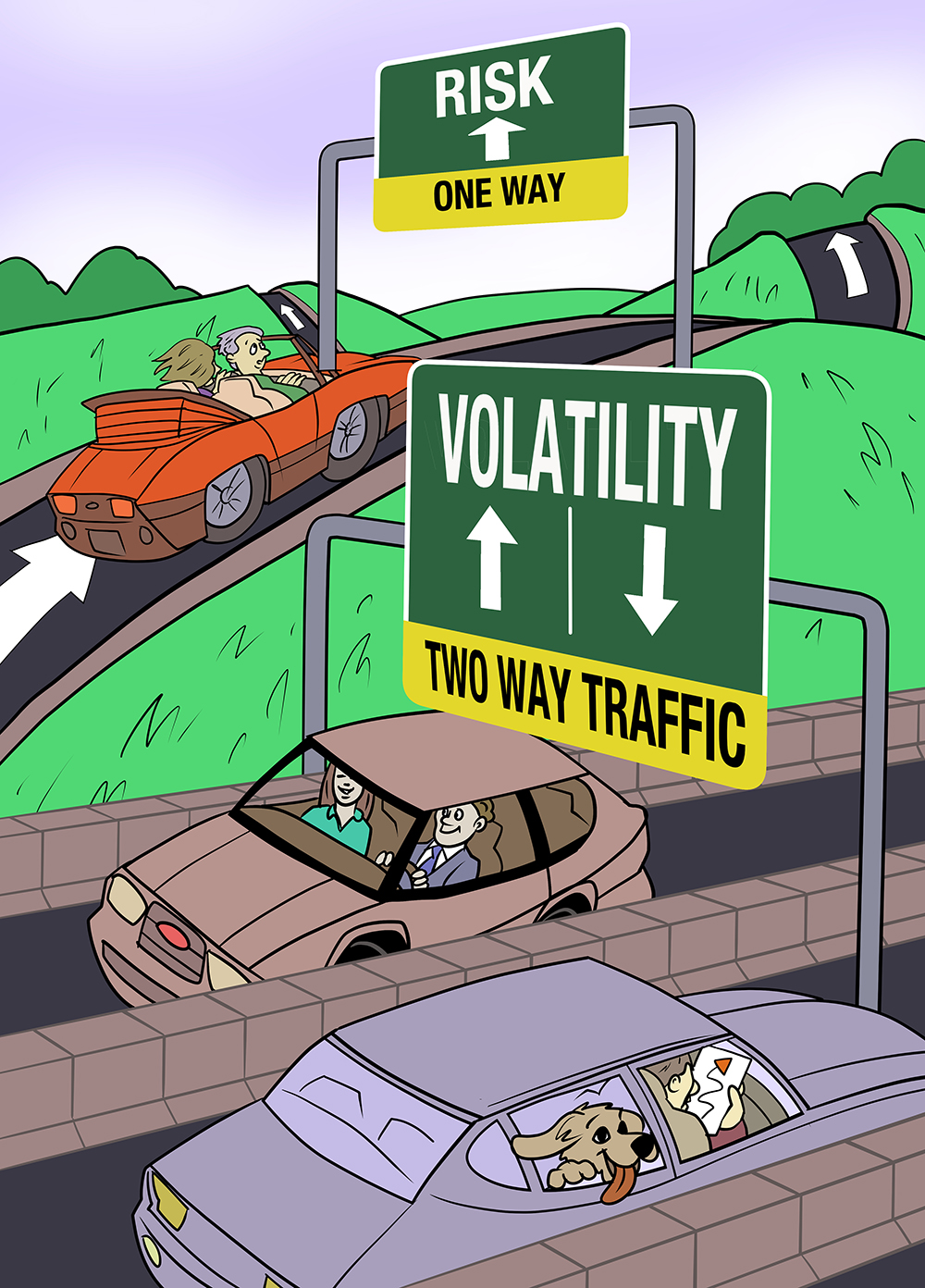SUBSCRIBE
Enter your Name and Email address to get
the newsletter delivered to your inbox.
Please include name of person that directed you to my online newsletter so I can thank them personally.

On Target Financial
5301 SW 7th Street, Topeka, KS 66606
Phone: 785-272-5000
Fax: 785-272-6725
Joseph G. Prokop, CFP®, CRPC®
Website: www.ruontarget.com

You may think of volatility and risk as interchangeable terms, but they’re not. Picture volatility as a two-way thoroughfare. Just as a car on that road can go in either direction, the price of an investment can go up or down over time. That’s volatility.
Risk is a one-way street. It’s the possibility that an investment will decrease in value and its price will drop. So, while volatility encompasses both the upside and downside of changes in the price of a security, portfolio or market segment, risk refers only to the potential for an investment to lose money.
*Investing regular amounts steadily over time (dollar-cost averaging) may lower your average per-share cost, but this investment method will not guarantee a profit or protect you from a loss in declining markets. Effectiveness requires continuous investment, regardless of fluctuating prices. You should consider your ability to continue buying through periods of low prices.
**Diversification cannot eliminate the risk of investment losses. Past performance won’t guarantee future results. An investment in stocks or mutual funds can result in a loss of principal.
Enter your Name and Email address to get
the newsletter delivered to your inbox.
Please include name of person that directed you to my online newsletter so I can thank them personally.
Enter your Name, Email Address and a short message. We'll respond to you as soon as possible.
Investment advisory services offered through Cambridge Investment Research Advisors, Joseph Prokop, Investment Adviser Representative. Cambridge and On Target Financial are not affiliated.
On Target Financial and LTM Marketing Specialists LLC are unrelated companies. This publication was prepared for the publication’s provider by LTM Client Marketing, an unrelated third party. Articles are not written or produced by the named representative.
The information and opinions contained in this web site are obtained from sources believed to be reliable, but their accuracy cannot be guaranteed. The publishers assume no responsibility for errors and omissions or for any damages resulting from the use of the published information. This web site is published with the understanding that it does not render legal, accounting, financial, or other professional advice. Whole or partial reproduction of this web site is forbidden without the written permission of the publisher.